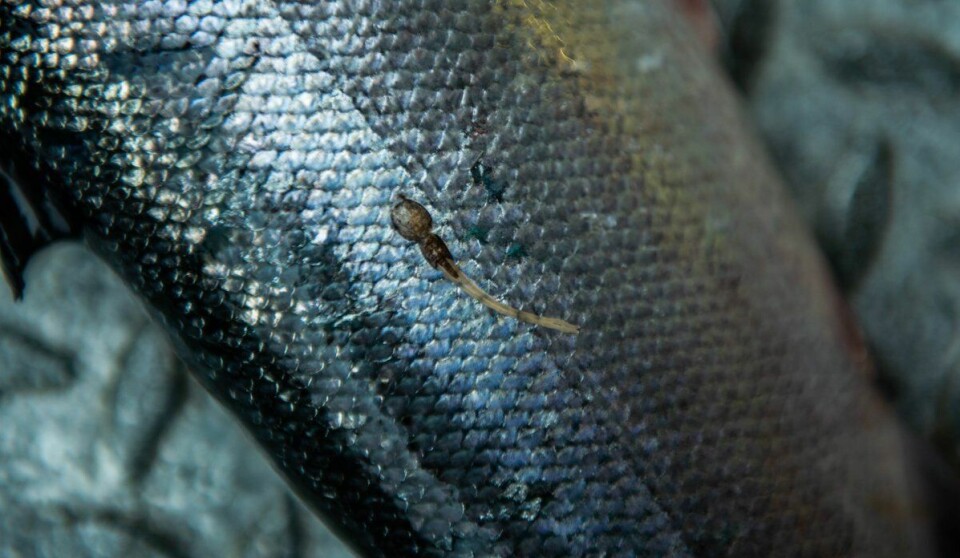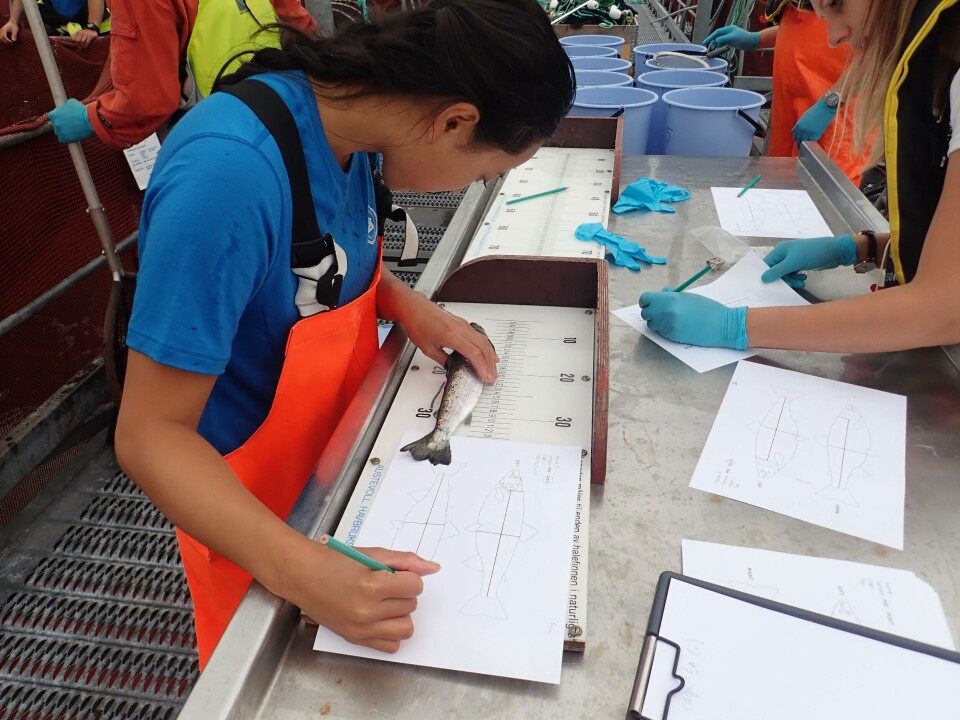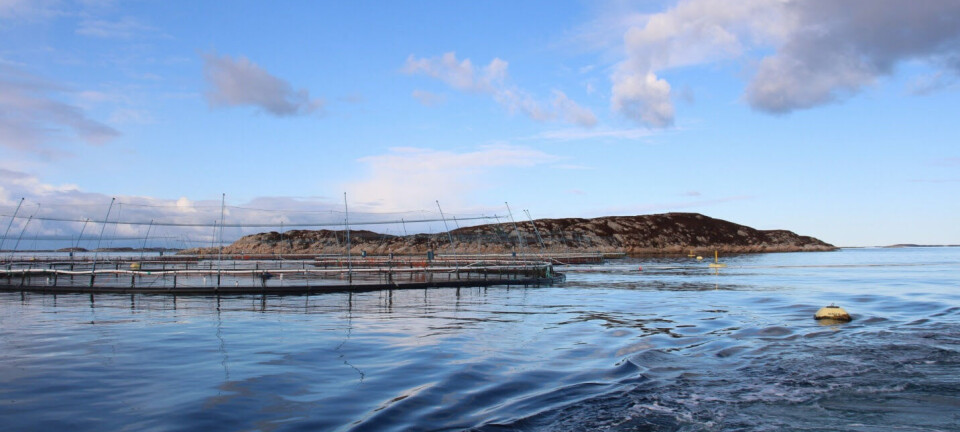
Female lice more attached to their fish, shows study
Almost all the male lice seen on salmon during the course of a 15-day study moved or fell off the fish, but the females stayed put, the Institute of Marine Research (IMR) in Norway has reported.
In the summer of 2018, researchers looking into how lice are distributed on the body of a host had 1,500 salmon weighing approximately 250 grams in three cages at a research facility in Austevoll.
The cages had not been de-loused for several months. One hundred fish from each cage were tagged so that researchers could identify them individually.

Automatic counting
“We wrote down how many lice they had, what lice stages they were at and where on the body they were,” said researcher Samantha Bui.
Fifteen days later they did the same thing again, reports an article on the IMR website.
The researchers made several interesting findings, which were recently published in the Journal of Fish Diseases .
“Among other things, we found more lice on the left side than on the right side. It is important to know for those who do automatic visual lice counting,” said Bui.
Most females on head
The researchers found 41% of the lice were on the left side of the fish, 35% on the right side and 24% on the back and abdomen.
The surveys also showed that 53% of the females were on the head of the fish, while most male and half-grown lice were found on the back of the fish’s back.
“It was a bit surprising, because previous studies have indicated that the females preferred the tail part,” said Bui.
However, the biggest surprise the researchers had was when they saw which lice had fallen off the host fish.

Few females fell off
In the 15 days between the two samples, the number of male lice dropped drastically. Adult male lice had a 91% risk of falling off the salmon.
For the female lice, however, it was quite the opposite. At the start of the experiment, the researchers counted 377 female lice. In the end, they numbered 380.
“It’s crazy. We saw that very few females fell off, and that those who fell off were replaced by younger female lice,” said Bui.
“The males move more, to look for females. And in addition, they are smaller. So, they are probably more vulnerable to falling off, for example when the fish are handled.”
A snapshot
Many previous studies have looked at the louse’s preferred location in laboratory experiments, but this study provides a more realistic description of how this occurs in cages in the sea, Bui believes.
“But it is a snapshot of the louse’s behaviour, so we need more studies to see how this changes with other seasons or fish sizes,” said Bui.
“This information is important for the industry, which is moving towards automatic systems for lice counting instead of manual lice counting.”























































